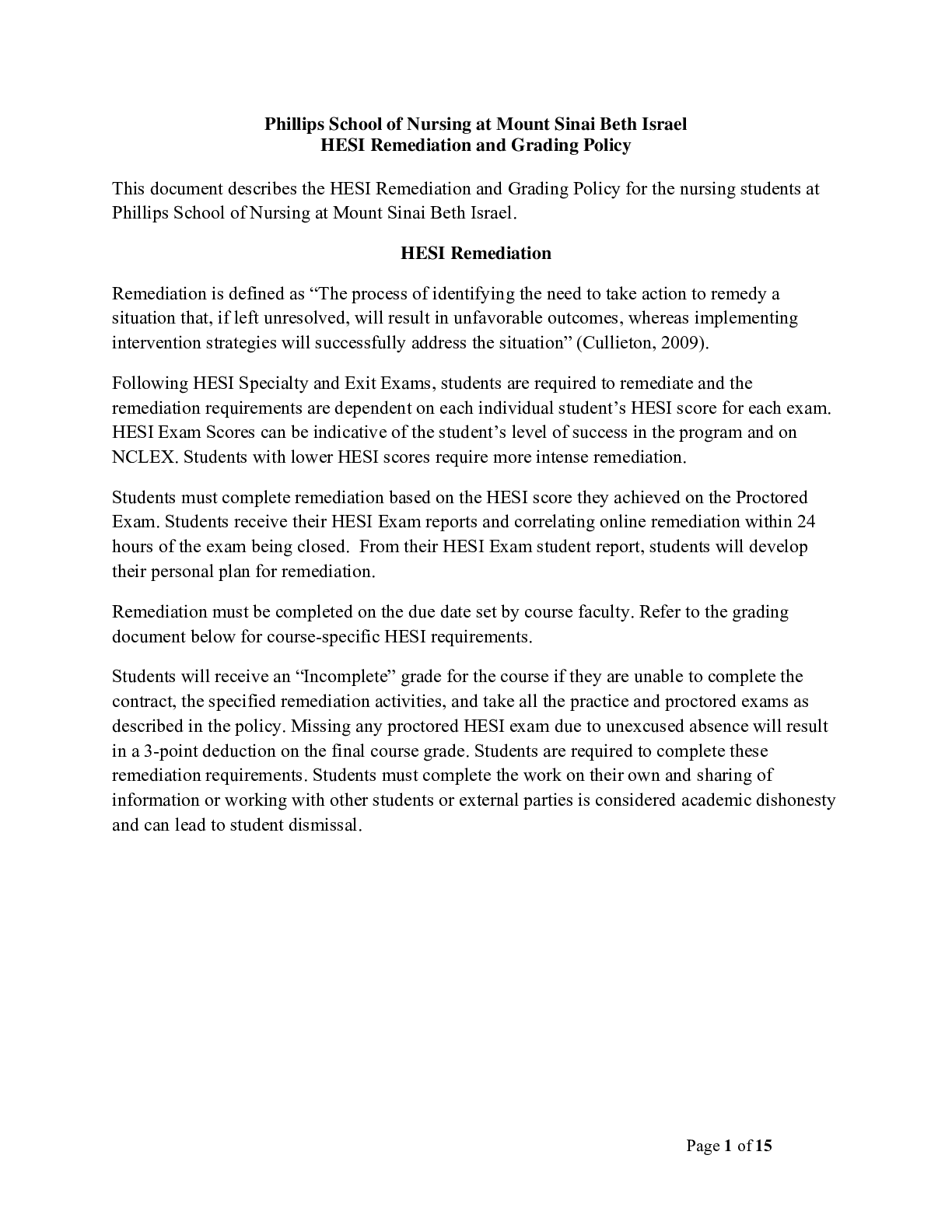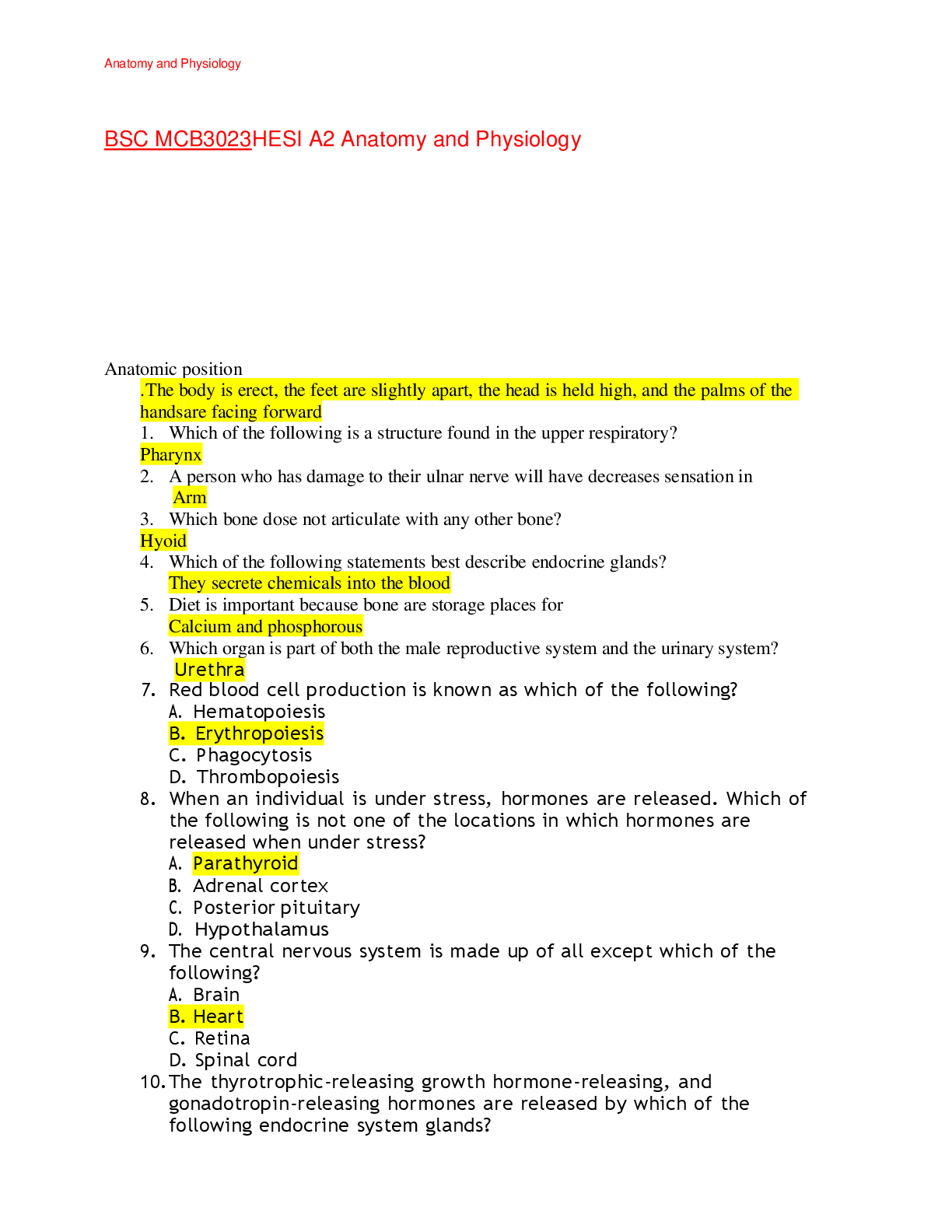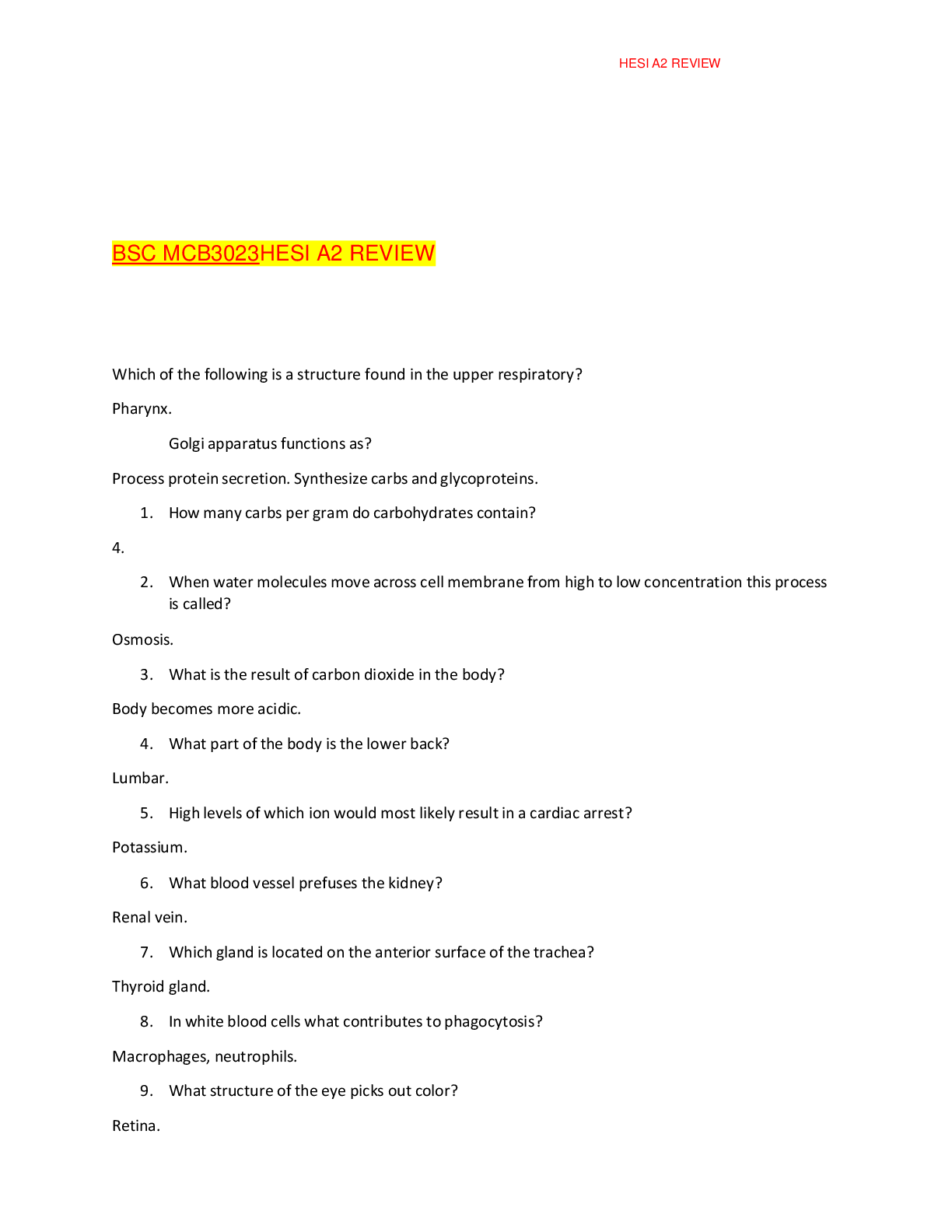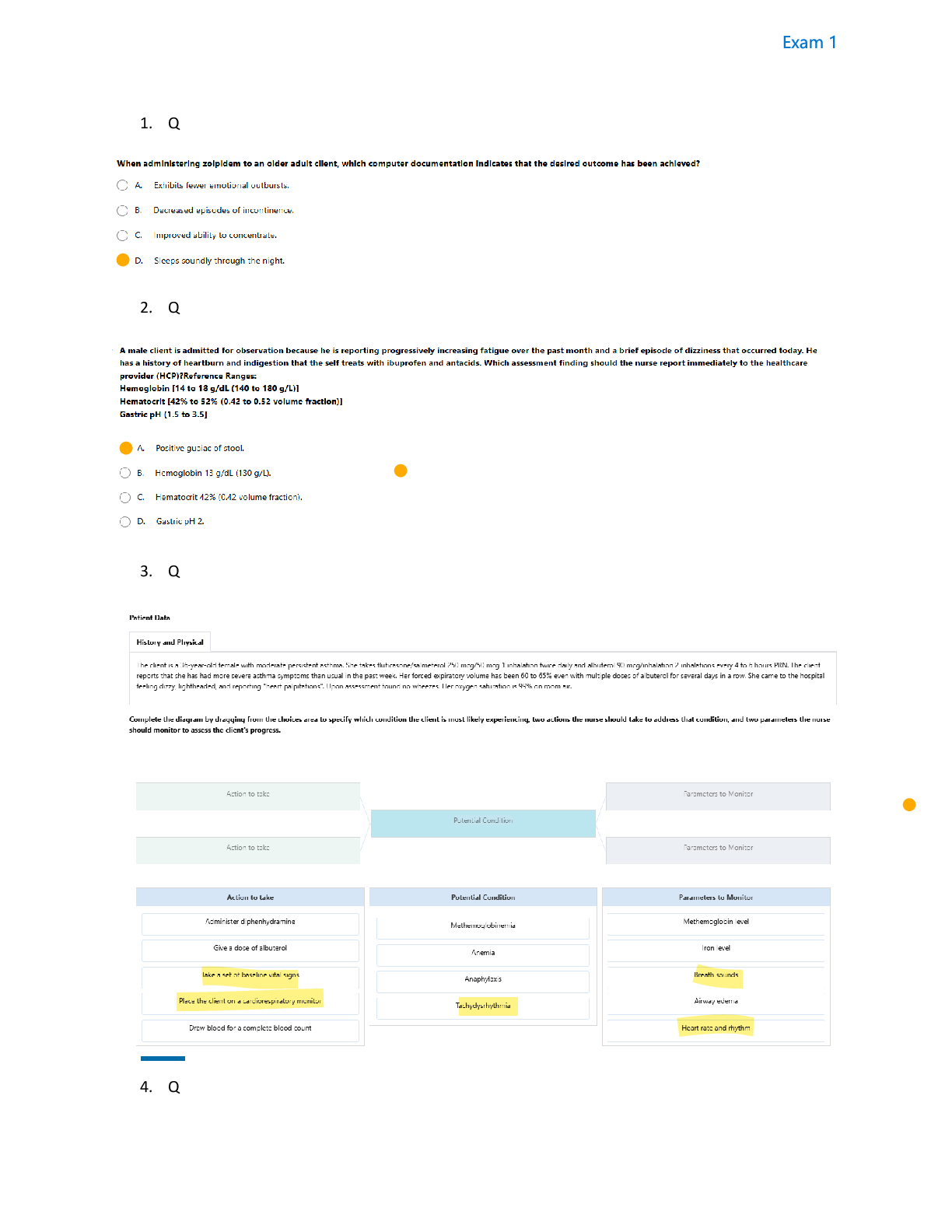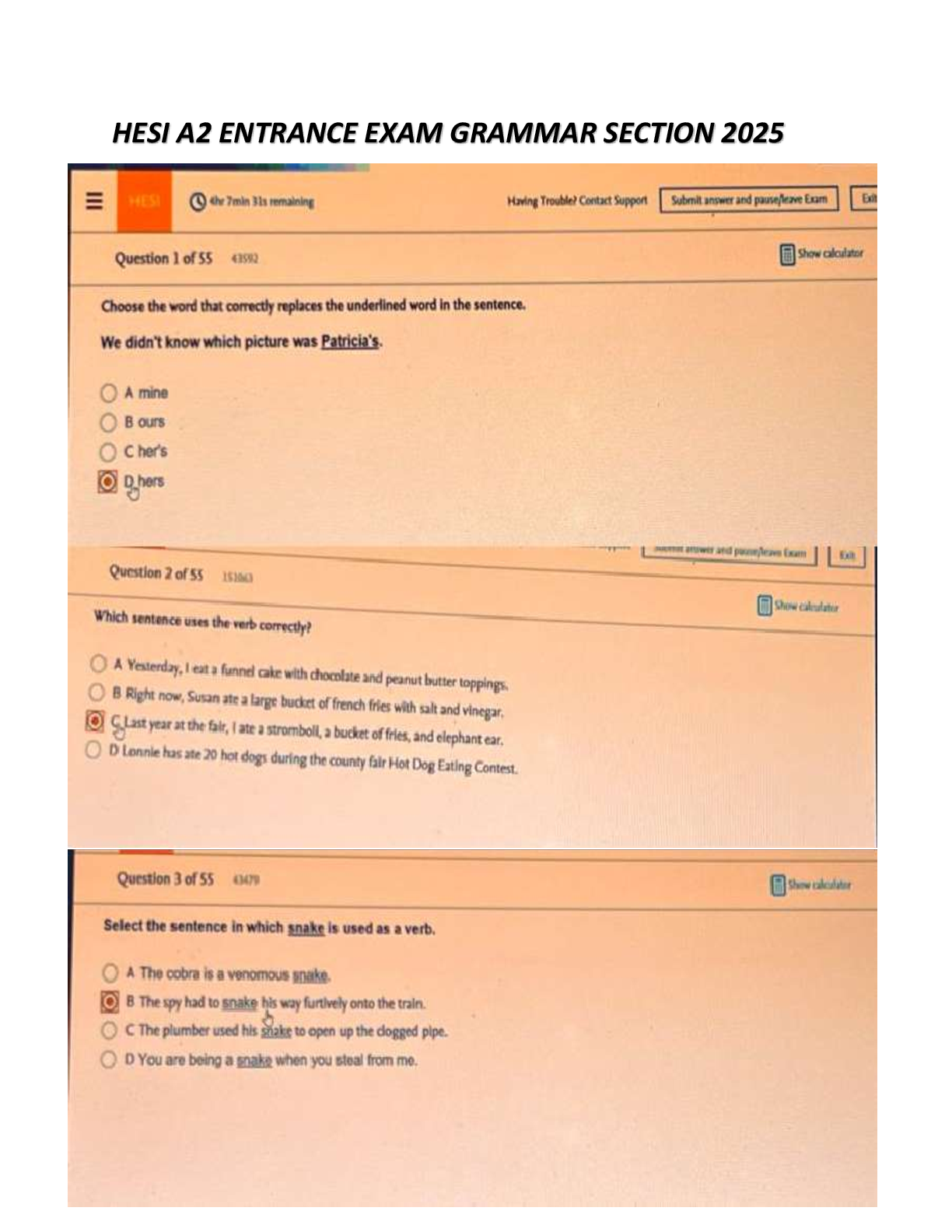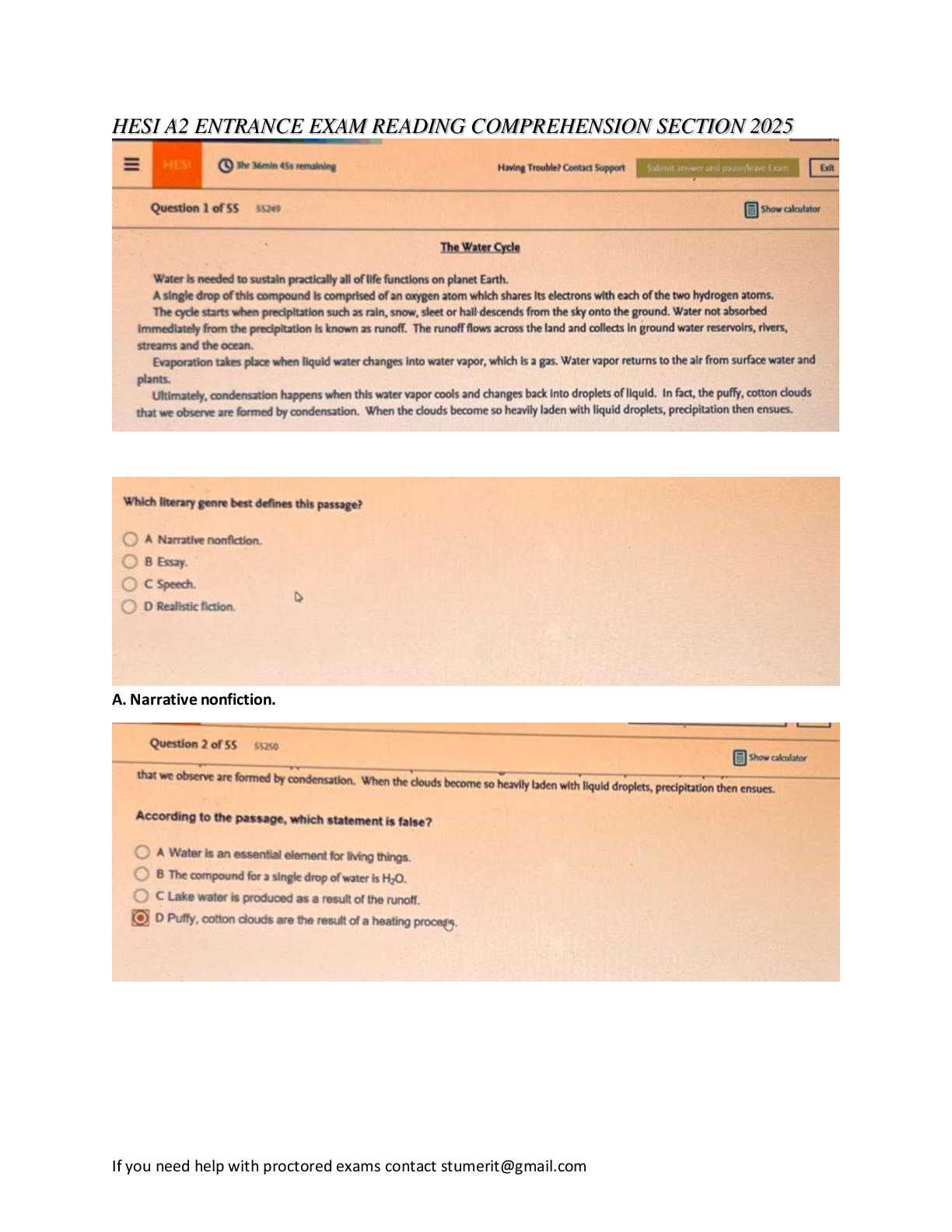HESI Practice Test Medical-Surgical Practice Quiz.pdf_
Document Content and Description Below
The nurse is assessing a client with bacterial meningitis. Which assessment finding indicates the client may have developed septic emboli? Return to Overview 100% Correct Well done! Let's review ... your results from 2/5/2021 at 4:04 am EST Correct Cyanosis of the fingertips. Bradycardia and bradypnea. Presence of S3 and S4 heart sounds. 3/21/2021 HESI https://hesi-preparation-suite.elsevier.com/#/hesiPracticeTestResults/1388770/10NGZ90CQP7 2/15 Rationale Septic emboli secondary to meningitis commonly lodge in the small arterioles of the extremities, causing a decrease in circulation to the hands which may lead to gangrene. What types of medications should the nurse expect to administer to a client during an acute respiratory distress episode? Rationale Besides supplemental oxygen, this client with ARDS needs medications to widen air passages, increase air space, and reduce alveolar membrane inflammation, such as bronchodilators and steroids. The nurse is interviewing a male client with hypertension. Which additional medical diagnosis in the client' s history presents the greatest risk for developing a cerebral vascular accident (CVA)? 3+ pitting edema of the lower extremities. Vasodilators and hormones. Analgesics and sedatives. Anticoagulants and expectorants. Bronchodilators and steroids. Diabetes mellitus. Hypothyroidism. 3/21/2021 HESI https://hesi-preparation-suite.elsevier.com/#/hesiPracticeTestResults/1388770/10NGZ90CQP7 3/15 Rationale According to the National Stroke Association (2013), history of diabetes mellitus poses the greatest risk for developing a CVA, 2-4Xs more than those who do not have diabetes mellitus. The reason for this occurrence is related to the excess glucose circulating throughout the body not being utilizing by the cells of the body, leading to the increased fatty deposits or clots inside the blood vessels in the brain or neck, eventually causing a stroke. A client who is fully awake after a gastroscopy asks the nurse for something to drink. After confirming that liquids are allowed, which assessment action should the nurse consider a priority? Rationale Following gastroscopy, a client should remain nothing by mouth until the effects of local anesthesia have dissipated and the airway's protective reflexes, gag and swallow reflexes have returned. A client taking furosemide (Lasix), reports difficulty sleeping. What question is important for the nurse to ask the client? [Show More]
Last updated: 3 years ago
Preview 1 out of 15 pages

Buy this document to get the full access instantly
Instant Download Access after purchase
Buy NowInstant download
We Accept:

Reviews( 0 )
$15.00
Can't find what you want? Try our AI powered Search
Document information
Connected school, study & course
About the document
Uploaded On
Sep 04, 2021
Number of pages
15
Written in
All
Additional information
This document has been written for:
Uploaded
Sep 04, 2021
Downloads
0
Views
100


